






Operated in support of the Kenya Wildlife Service, Sheldrick Wildlife Trust's Aerial Unit monitors for illegal activity from the skies and offers rapid response assistance in anti-poaching operations, human-wildlife con�ict, veterinary treatments, orphan rescues, and all manner of �eld emergencies.
This report details Aerial Unit activities for September 2025
27,678
Hours �own: Areas patrolled:
191
Kilometres �own:
26,664
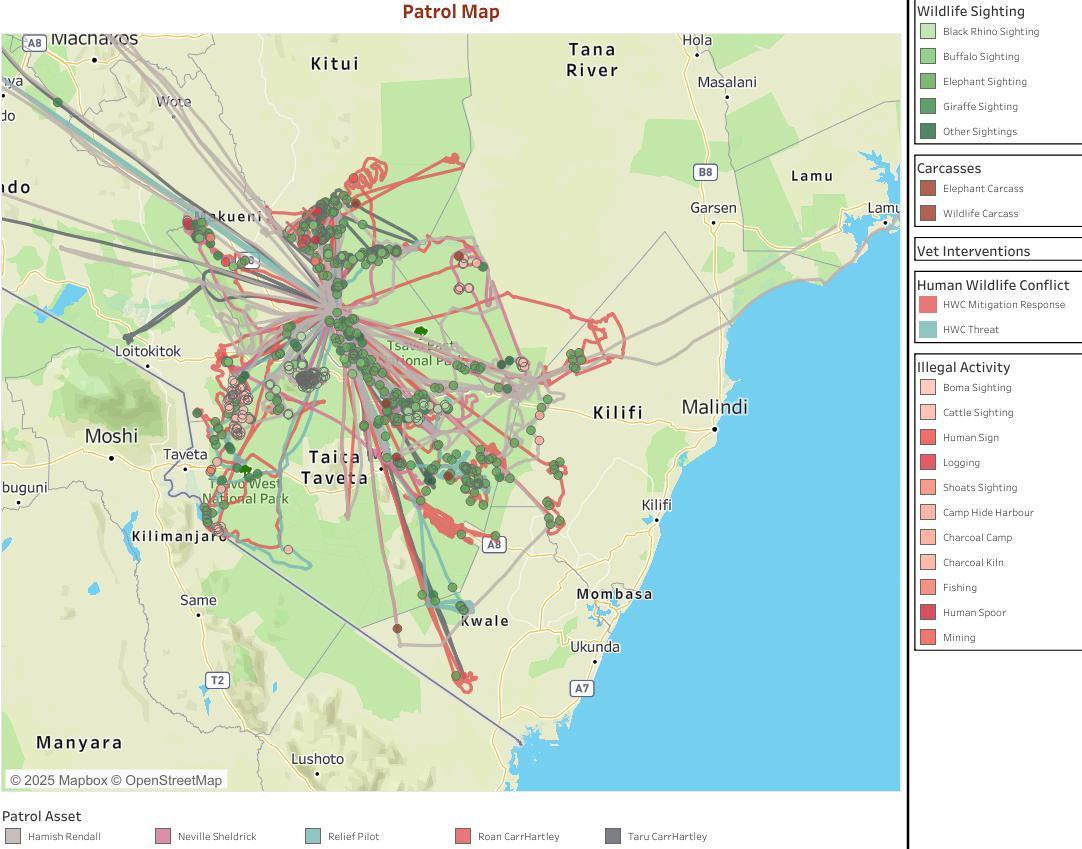
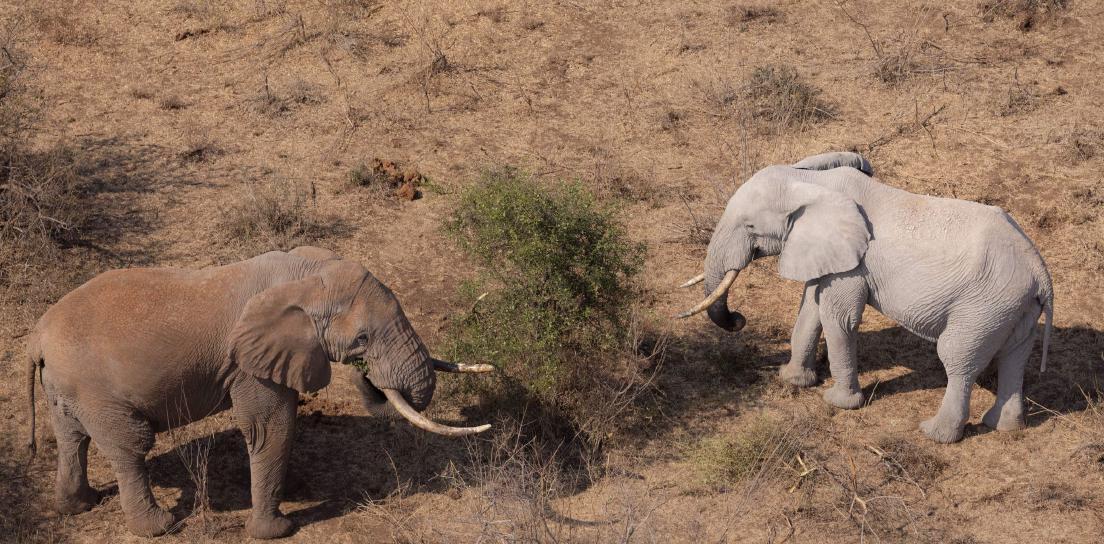
September was an active month for both aerial and ground operations, marked by numerous veterinary interventions, human-wildlife con�ict responses, and several orphan rescues.
A total of seven elephants received treatment for a range of injuries, including poisoned and non-poisoned arrow wounds, poisoned and non-poisoned spear wounds, and one gunshot wound. The �rst case involved three elephants sighted near Iltilal on the western side of the Chyulu Hills, all with multiple spear wounds. A vet was �own to nearby Finch Hatton's in another �xed-wing aircraft that happened to be patrolling near Voi, whilst a helicopter was also deployed. The �rst treatment succeeded; however, before darting the second elephant, it collapsed in convulsions and died. The team decided to postpone treating the third elephant for fear of a similar outcome. Later intelligence con�rmed that the spears had been tipped with poison and intended to kill
Another spear victim to the south also received darting via helicopter and treatment for a severe spear injury to the front right leg. Unfortunately, the spear had fractured the elephant's leg, so the prognosis remains poor. Nevertheless, he received antibiotics and anti-in�ammatories, and our teams will continue to monitor his progress

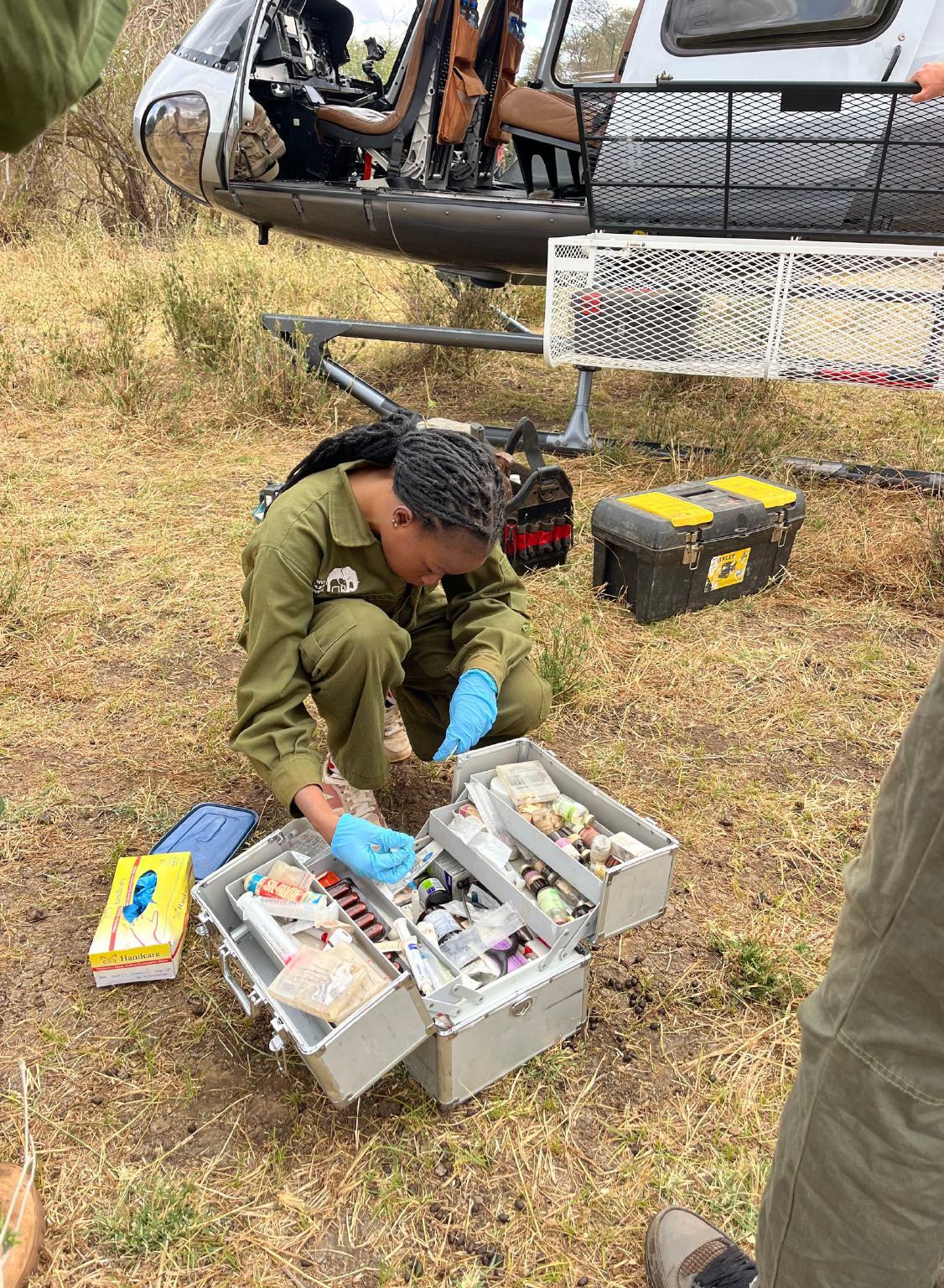
Four other elephants received treatment for arrow wounds and were given good prognoses for recovery. Two of these were sighted from the ground and later treated with darting support from our helicopter, whilst two others were sighted during routine �xed-wing patrols and treated one with helicopter support and the other without
The helicopters remained busy throughout the month with human-wildlife con�ict incidents. Several involved pushing elephants out of densely settled areas and back into protected zones. In two cases, our helicopter assisted the Kenya Wildlife Service in translocating problem elephants after other efforts had failed These included two bull elephants darted and translocated from Amboseli to Tsavo East National Park, and another bull darted in lower Imenti Forest (Mount Kenya region) and also moved to Tsavo East.
In addition to these, we assisted KWS in trapping and translocating (by helicopter) two crocodiles from the Athi River outside Tsavo East into the Park, following the tragic death of an 11-year-old boy at the same location.

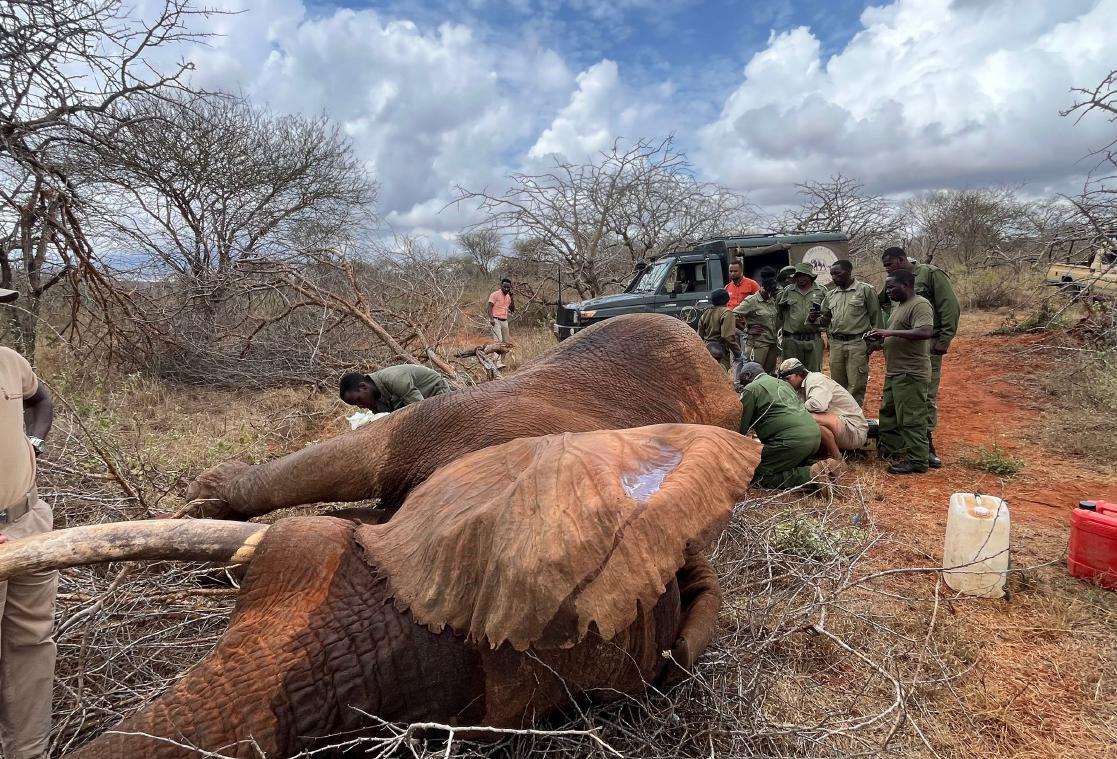
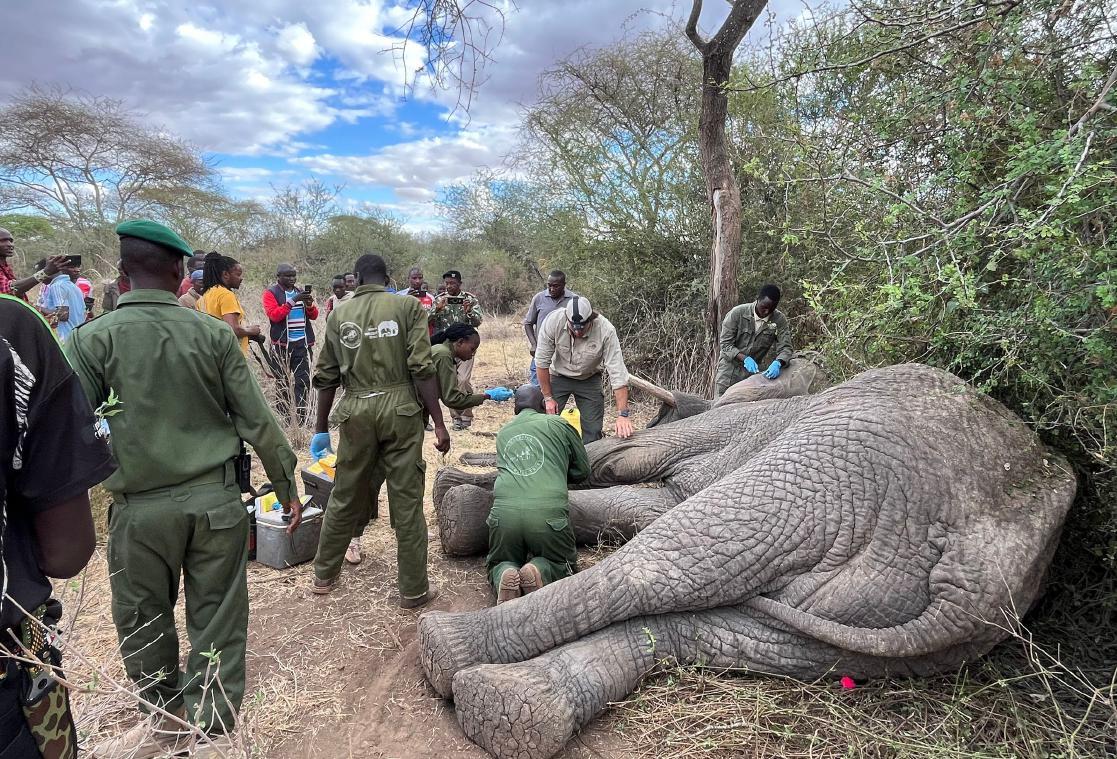
The Aerial Unit also helped rescue three orphaned animals: one giraffe and two baby elephants. A very young giraffe was observed over several days, always alone, along the boundary of Tsavo East National Park. Our teams searched unsuccessfully for three days, both on the ground and from the air, before our K9 Unit eventually picked up tracks leading to its rescue assisted from above by helicopter The two orphaned elephants, rescued separately in southern Tsavo East, were each airlifted to Kaluku for care. Sadly, both were in very poor condition at the time of rescue and did not survive.
Another elephant rescue, however, had a much happier outcome. A calf found by herders stuck in a shallow well gained freedom after our team �ew down by helicopter. The mother was brie�y moved away using the helicopter to allow access, and the calf was quickly lifted from its predicament Mother and calf were then happily reunited
The Aerial Unit observed two recent elephant carcasses one with tusks intact (later collected by SWT/KWS) and another with tusks missing (presumed poached). Sightings of carcasses with missing ivory have become exceedingly rare, a positive indication of the success of all involved over the past decade
Aside from the possible poaching case, the only other poaching activity detected during aerial patrols included two old �replaces and suspected poachers' tracks leading out of the Park
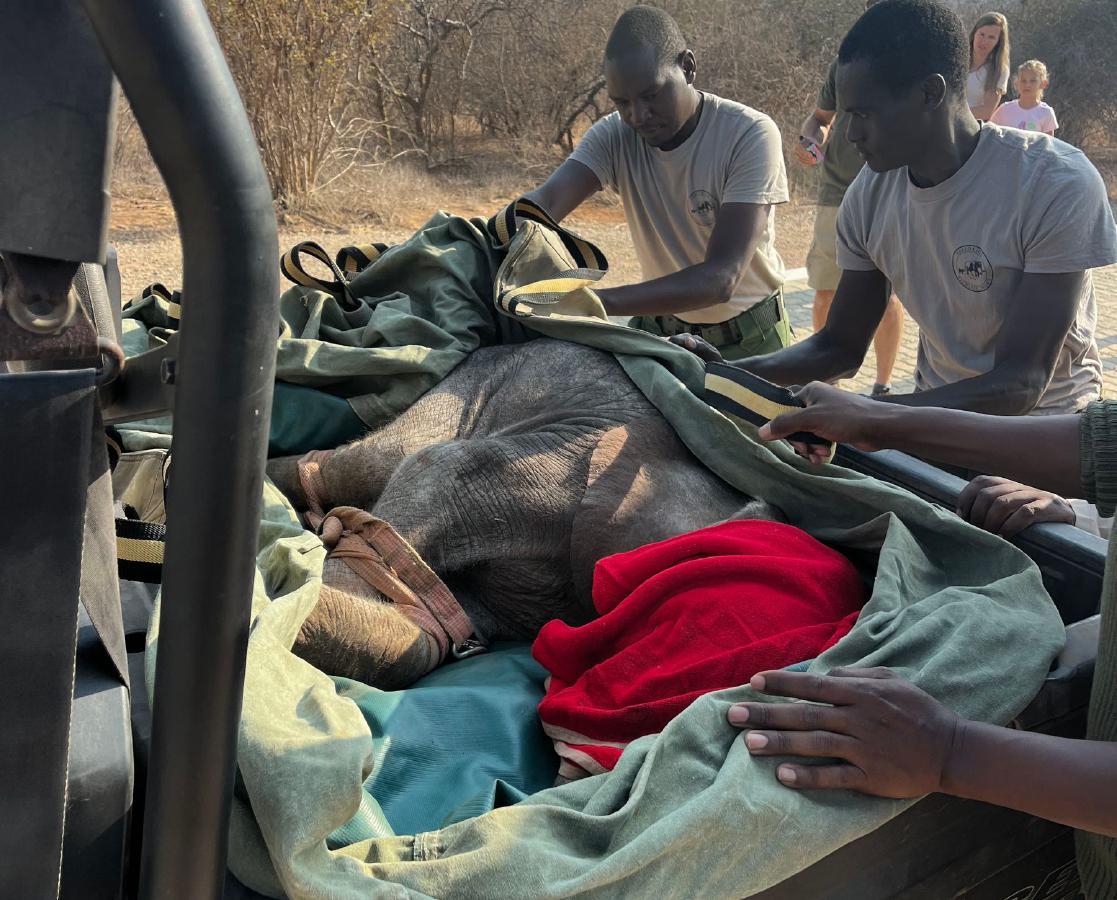

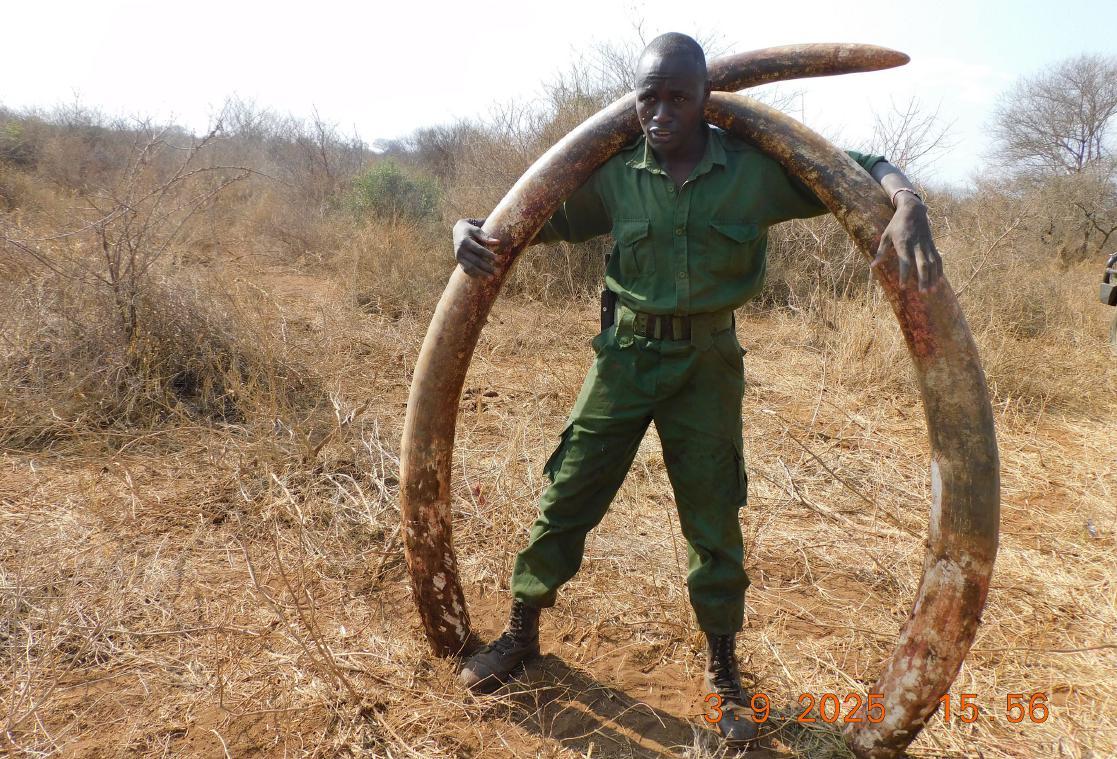
Other illegal activities observed from the air included signs of honey harvesting, logging, livestock grazing, and charcoal burning. The charcoal burning was con�ned to Kulalu Ranch, outside the Parks. Illegal livestock incursions also remain generally low, with the only signi�cant incursions occurring in a small section of Tsavo West National Park
The Aerial Unit also supported KWS in September with the search for missing tourists in Tsavo West, who were soon located, as well as with several �re�ghting operations. This included delivering �re�ghting equipment and water to ground teams and dropping loads of water on �res using a Bambi Bucket
The month's most notable sightings included approximately 70 rhinos in the Ngulia Rhino Sanctuary, all in good health and spotted in a single �ight Other highlights included a leopard, 24 wild dogs, and a lion spotted at a spring in the Yatta area We also spotted a pride of lions feeding on a giraffe carcass within the Rhino Sanctuary
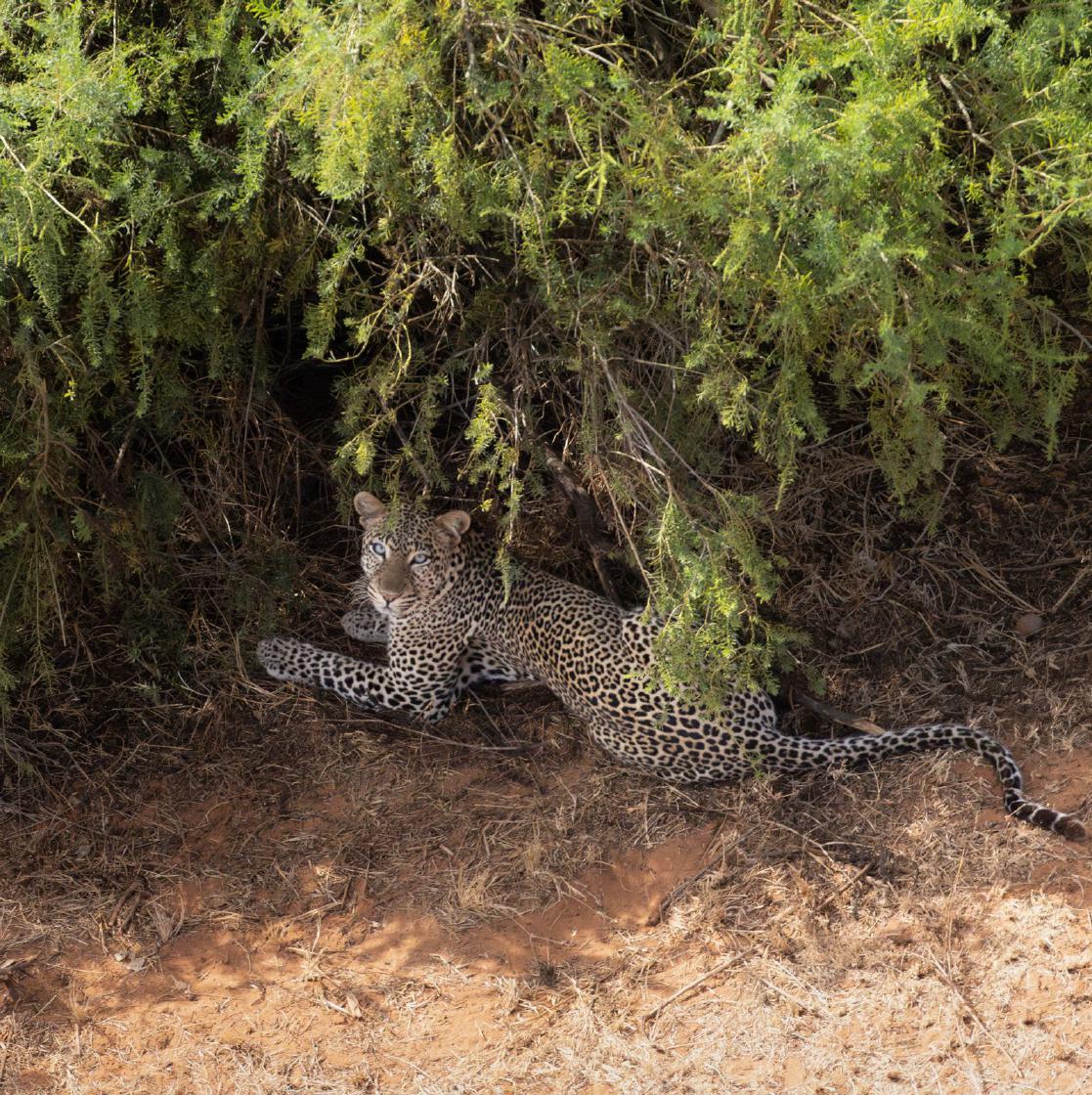
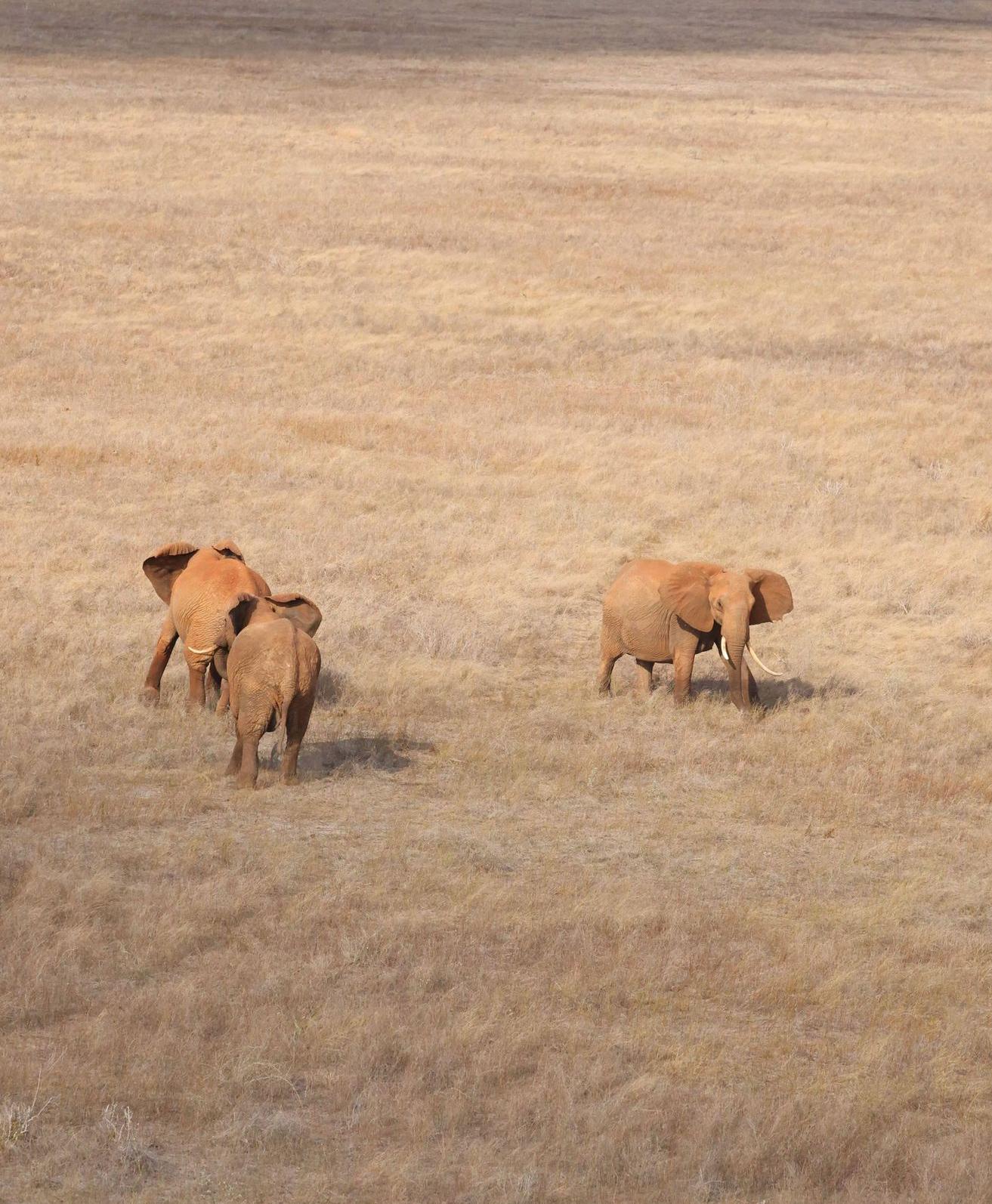

The Aerial Unit, as with all Sheldrick Wildlife Trust's conservation projects, is a donorfunded initiative Thank you to our global supporters, who help us secure Kenya's habitats for the future and make an impact in the �eld, each and every day